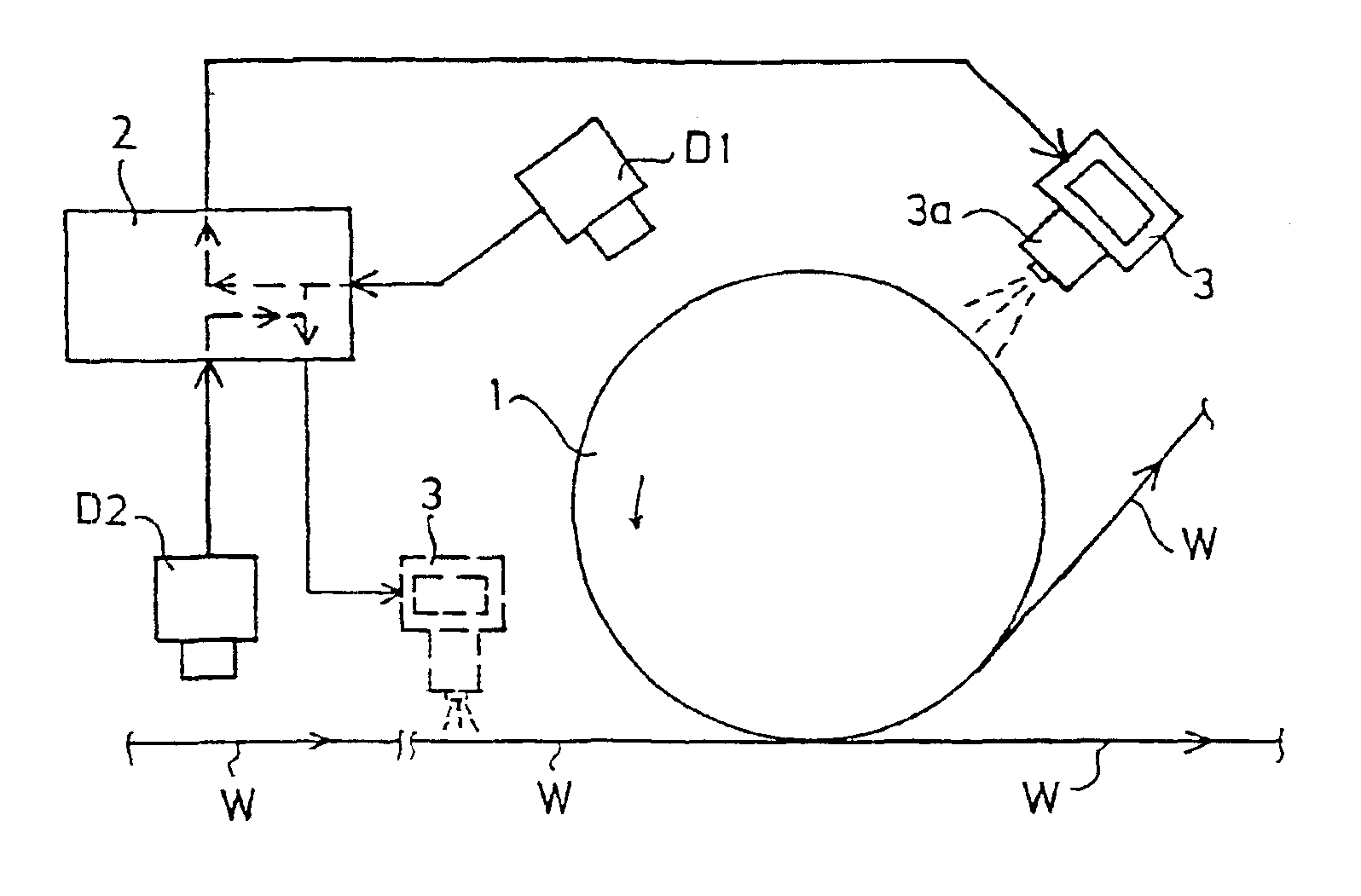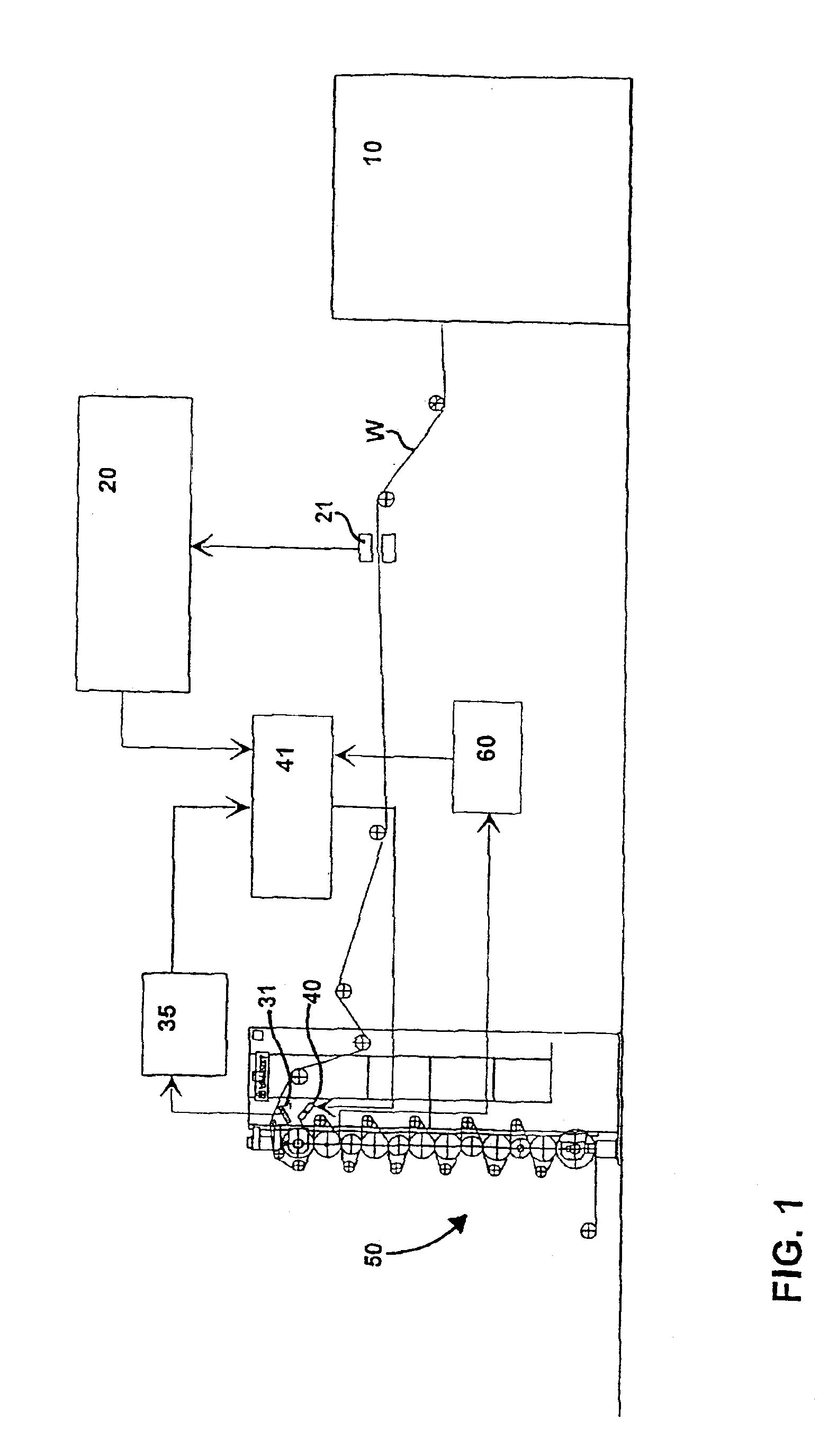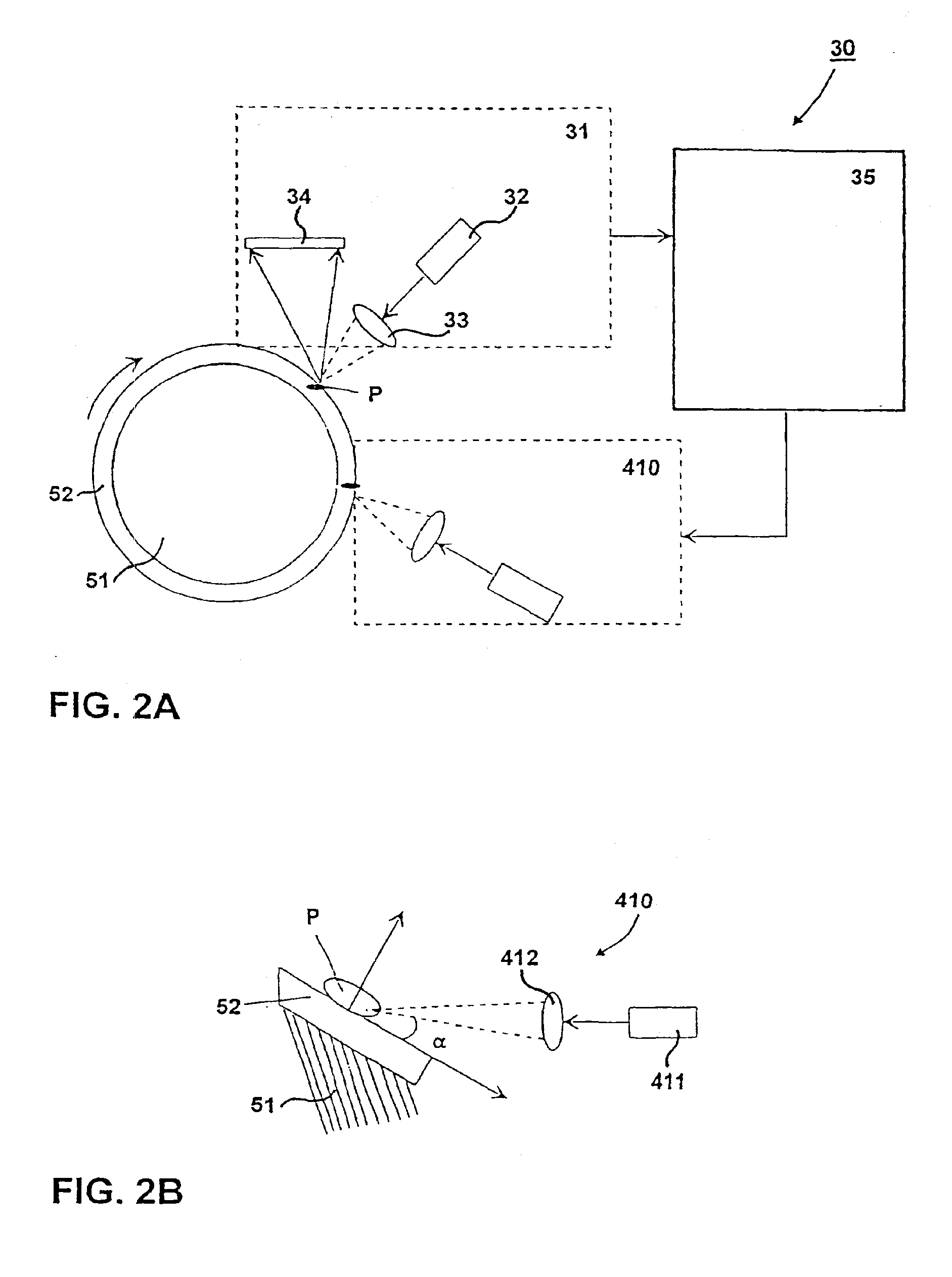Method and equipment for cleaning and maintaining rolls
a technology for cleaning and maintaining rolls, applied in the direction of vehicle cleaning, manufacturing tools, instruments, etc., can solve the problems of permanent deformation of the cover, damage, and damage of the cover, and achieve the effect of reducing the amount of broken calender rolls, prolonging the operating life of the calender rolls, and reducing the amount of soiling
- Summary
- Abstract
- Description
- Claims
- Application Information
AI Technical Summary
Benefits of technology
Problems solved by technology
Method used
Image
Examples
example
[0109]The surface material (Duraheat, Durasoft) of the roll was treated with aqueous solutions of surface active substances. The experiments used a cationic surface active substance (Quadrilan AT), anionic surface active substance (Perlankrol EP 36) and non-ionic surface active substance (Monolan 8000 / E80). In all cases the cleaning result was good.
[0110]While performing tests in laboratory conditions on the surfaces treated in the above-mentioned way, it was discovered that their angle of contact was about 50°, in which case the roll surface had become somewhat more hydrophilic.
[0111]The invention is not limited to what is stated above, but it can vary in accordance with the Claims. The materials of the doctor blades can be different. The liquid sprayed on the surface of the roll can be any kind of liquid substance, which eases cleaning the surface of the roll and / or changes the surface properties of the roll in the desired direction. The main point in this invention is, that by us...
PUM
| Property | Measurement | Unit |
|---|---|---|
| thickness | aaaaa | aaaaa |
| thickness | aaaaa | aaaaa |
| running velocity | aaaaa | aaaaa |
Abstract
Description
Claims
Application Information
 Login to View More
Login to View More - R&D
- Intellectual Property
- Life Sciences
- Materials
- Tech Scout
- Unparalleled Data Quality
- Higher Quality Content
- 60% Fewer Hallucinations
Browse by: Latest US Patents, China's latest patents, Technical Efficacy Thesaurus, Application Domain, Technology Topic, Popular Technical Reports.
© 2025 PatSnap. All rights reserved.Legal|Privacy policy|Modern Slavery Act Transparency Statement|Sitemap|About US| Contact US: help@patsnap.com



